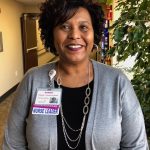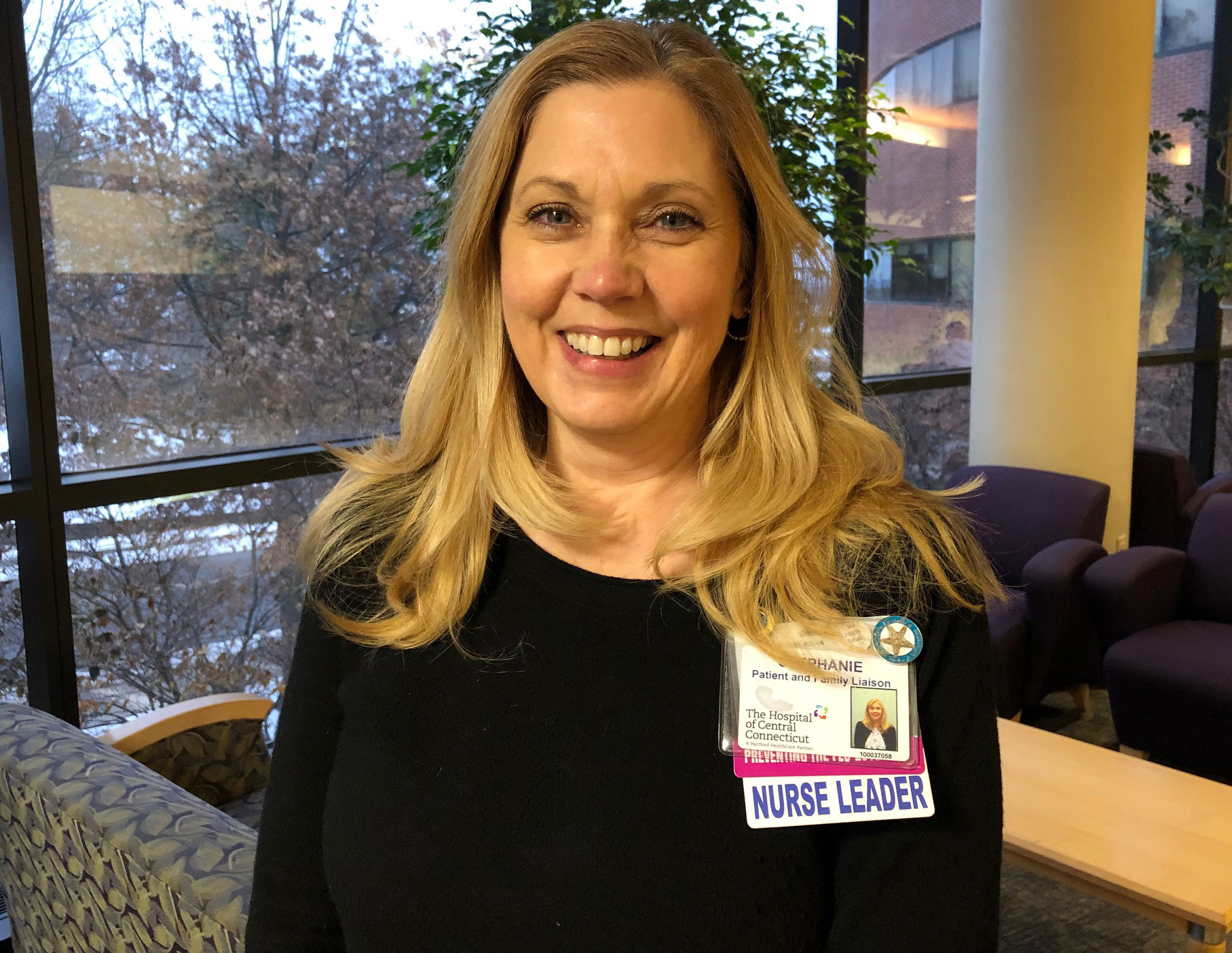Being in the hospital can be unsettling, unfamiliar and uncomfortable for many patients. After all, it’s not where they would rather be.
To help smooth the way and enhance patient experience, patient liaisons are now on staff at The Hospital of Central Connecticut (HOCC) in New Britain and Bradley campuses, and at MidState Medical Center.
Karen Ellison is the patient liaison at MidState Medical Center. Some of the patients she sees have been identified for escalation of care and transfer to Hartford Hospital or The Hospital of Central Connecticut. She also administers to patients who have been transferred to MidState, in addition to patients on the inpatient units.
Stephanie Adkins (pictured above), the patient liaison at HOCC, has a presence both at the New Britain campus and Bradley in Southington. Many patients she sees are coming into the hospital as transfers from other hospitals.
“Sometimes they come from Windham or Backus, and are unfamiliar with the area,” Adkins says. “I can help them and their loved ones find the things they need nearby.”
Both liaisons help coordinate care. When there is a change in discharge plans, the liaisons help make the transition a smooth one for patients. Having a patient liaison provides a calming presence for patients and families.
“People come in during a time of anxiety, and we can help address their concerns and get them answers,” says Ellison. “Our sole purpose is to help patients and families navigate during their stay.”
“When folks are in the hospital, they have needs, and we serve as a touchpoint,” says Adkins. “We’re available at a moment’s notice. Patients, leadership and staff know how to reach us. We can offer time that clinicians and providers might not have.”
Ellison also notes that the role of patient liaison is a benefit to providers.

“If a patient’s first response is to say, ‘Everything is fine,’ a little more conversation can draw out important information that a physician can use,” she says. “We can build a relationship with the patient that helps us to gather information that can support more patient-centered care.”
Adkins points out that providers might sense a little more follow-up with a patient is necessary.
“They can reach out,” she says, “and dispatch us to evaluate the situation and report back to them with what we learned from talking to the patient.”
Both liaisons, who have backgrounds in nursing, acknowledge the relationship between patients and doctors vs. the relationship between patients and nurses is very different.
“Nurses communicate very differently than practitioners,” says Adkins. “The position lends itself to gathering history and we learn the questions that lend themselves to candid responses.”
Ellison agrees: “Patients may be a little more comfortable opening up to us and letting us get to know them.”
Both Ellison and Adkins are excited about their new roles, which are evolving, depending on patient needs and providers’ input. It’s a team approach with one goal in mind: to provide an extraordinary patient experience for each person they encounter.
For more information on The Hospital of Central Connecticut, click here. For more information on MidState Medical Center, click here.

